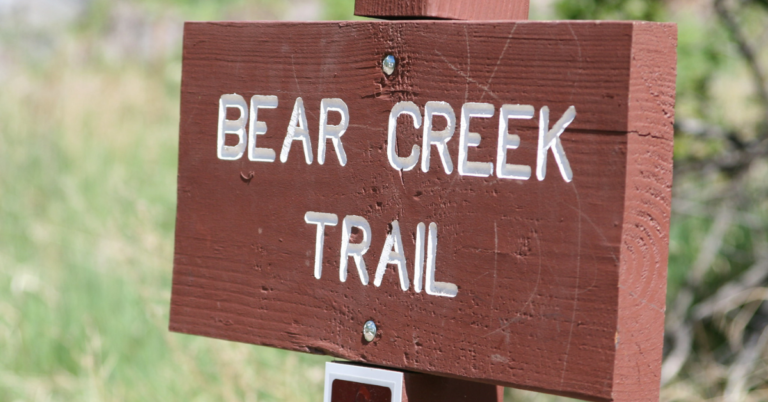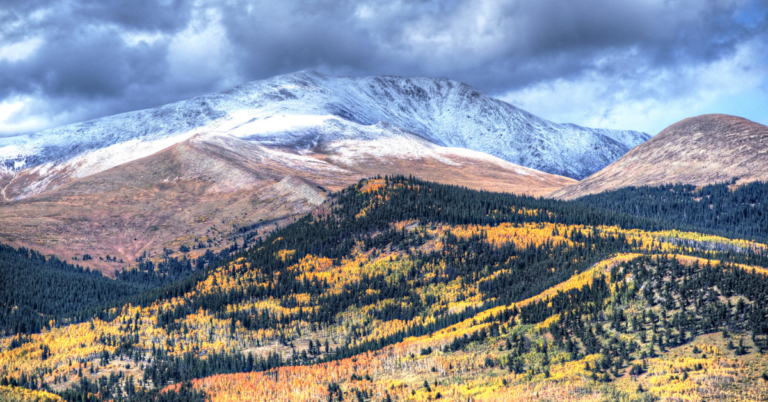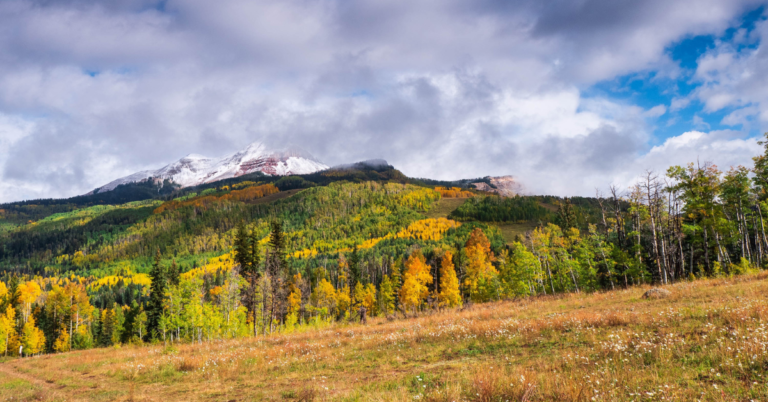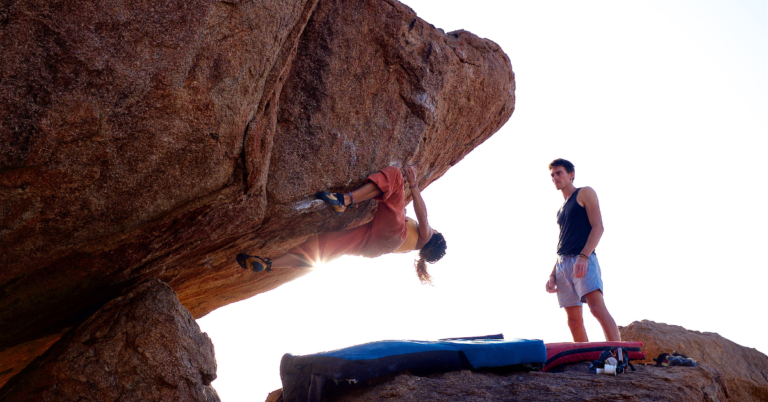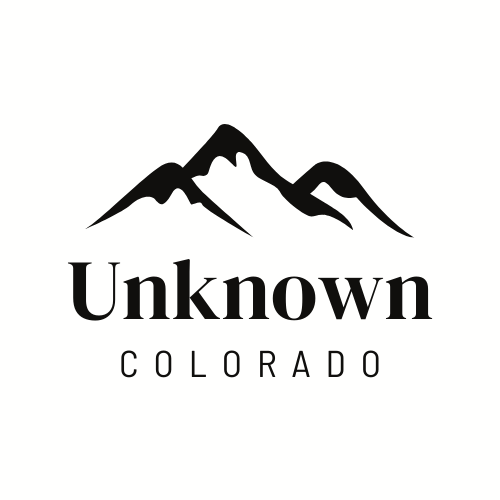Trail running in Colorado is a magical experience. High altitude, diverse terrain, and wildlife promise to greet you at every trailhead, turn, and mountain summit—it’s up to you to lace up your shoes and get after it.
Colorado trail running is a build-your-own-adventure (BYOA) experience every time you walk out the door. What sparks your interest?
- Challenging climbs up 14,000+ foot peaks
- Technical trails winding through tight aspen forests
- Leisurely jaunts through flat meadows
- Up-and-down rollercoaster trails
- Inspiring runs with expansive (and dangerously distracting) views
You name it; Colorado’s got it.
If you’re new to trail running in Colorado, first, let me give you a warm welcome. You are wanted here.
Colorado trail running initially inspired me to move to this beautiful state. While I’ve fallen in love with dozens of other outdoor pursuits, my heart always returns to trail running—and this is the perfect place to do it.
This guide to trail running in Colorado is a must-read for new runners in the state. It’ll introduce you to the best running trails in Colorado, jaw-dropping races, and tips to optimize your performance (and avoid a trip on a rescue helicopter).
Ready to get after it? Bookmark this page—because you might head out the door on your next run before you even finish.
9 Essential Colorado Trail Running Tips
These Colorado trail running tips assume you already know basic trail running techniques and etiquette (faster cadence, pack it out, trail shoes, etc.).
What we’re covering here is Colorado-specific trail running advice:
1. Start Low and Slow
Resist the urge to head up into the high country and try to PR your 5K. Take things slow while you adjust to the altitude and dryness (not to mention the ruggedness of some trails).
Denver itself is at 5,280 feet, but some other mountain towns in Colorado start much higher.
I remember the first “mountain” trail run I planned when I moved to Colorado. I ran a 16-mile route near Nederland to Brainard Lake State Park, and I couldn’t understand why I was dying by the time I circled the lake. At the time, I couldn’t figure it out—now I know it’s because Brainard Lake is 10,396 feet above sea level.
Ouch.
Give yourself time to acclimate. Plan to stay low and go slow from the get-go (woah—check out those rhymes).
2. Go Easy on Yourself
Be patient with yourself. Running Rocky Mountain trails takes a bit of adjusting. You might find your heart rate spiking or your pace dramatically decreasing.
Don’t take it personally.
It takes time to adjust to the altitude and technical Colorado trails. Give yourself a long acclimation period. Don’t beat yourself up and try to push through the pain or fatigue—that’s asking for an expensive ticket to the physical therapist.
3. Know Your Altitude
Plan your runs, and know your altitude. If you want to go for a run in Rocky Mountain National Park, just know that you’re going to need to slow down the pace and potentially do a bit more hiking than running.
4. Look at More Than Just Distance
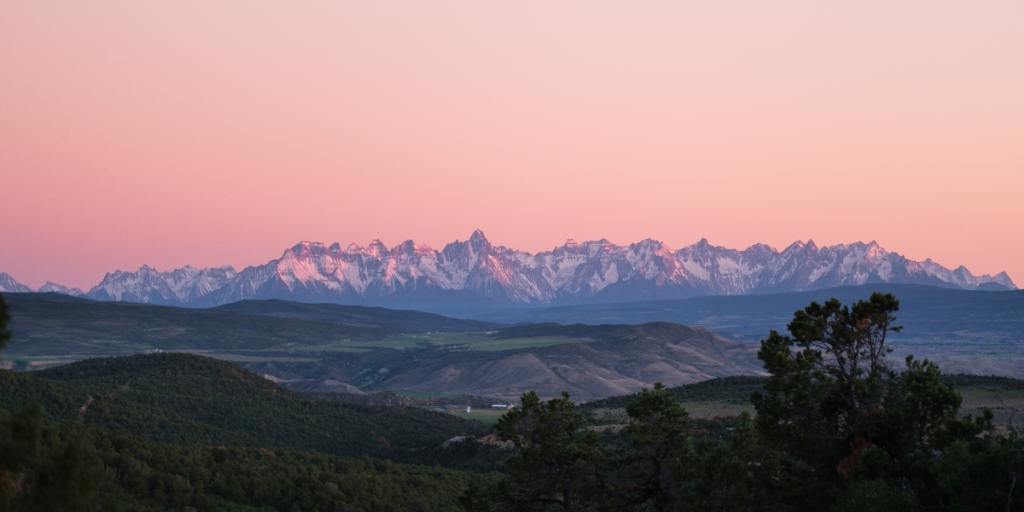
You might be used to measuring the distance of your trail runs, but I’d encourage you to look at a few other data points:
- Elevation gain
- Altitude
- Technicality
- Terrain
- Weather
- Crowds
All of these factors will impact your performance (and enjoyment). Whether you’re using Strava, Alltrails, or another application to plan your runs, look at all these aspects when choosing your trail.
5. Bring a Map
Getting lost in nature isn’t as magical and wanderlusty as it sounds. It’s not as hard as you think to lose your way and end up far away from your vehicle (or civilization).
Always bring a map (of some sort) to determine your location. Some would preach to always bring a physical map, but I’d just recommend a primary and backup method.
For example, I can check my location (even when offline) on apps like Strava, Garmin Explore, and Alltrails. If my phone dies (which happens often in the cold), I can use the GPS map on my watch to help me navigate.
6. Tell a Friend
Seriously. Tell someone where you’re going.
It could be your spouse, friend, or roommate, but never wander off into the Colorado wilderness without someone knowing where you’re going.
I personally use Strava’s Beacon feature to automatically send a text with my real-time location to my wife so she always knows where I am. And as an extra precaution, I almost always take my satellite phone with me when I’m going into the backcountry.
Yeah, it’s a brick, and it’s added weight—and I hope I never have to use it. But it’s there when I do.
7. Learn About the Wildlife
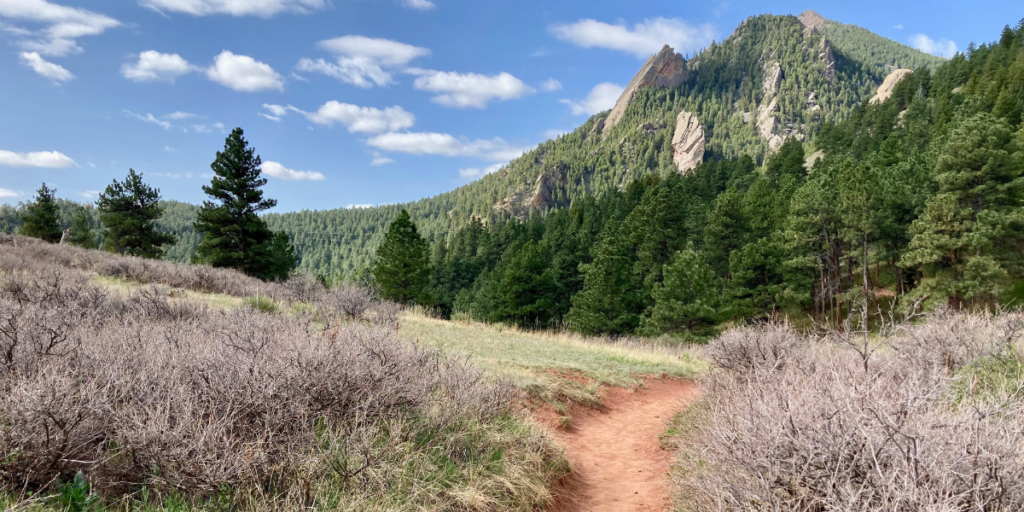
Know what to do when you encounter a black bear? What about a mountain lion? How about a moose?
You don’t need to be a zoologist, but you should have a basic understanding of the local wildlife. Study the trailhead signs to see what you might be up against—many will have local sightings posted, whether that’s a bear or an abundance of rattlesnakes.
Also, learn about the local plant life. It’s better to know what to do when you step in a cactus before you accidentally step in a cactus—and that’s coming from personal experience.
8. Carry Snacks and Water
Always carry snacks and water. For starters, it’s just good for health and performance. For seconds, you’ll be grateful you did, especially if the run takes longer than you expected or you take a wrong turn at some point.
It could be as simple as a lightweight energy gel or a stroopwafel. And for carrying water, you can use a handheld bottle, waist belt, or even a pack (for longer runs).
9. Watch Your Feet
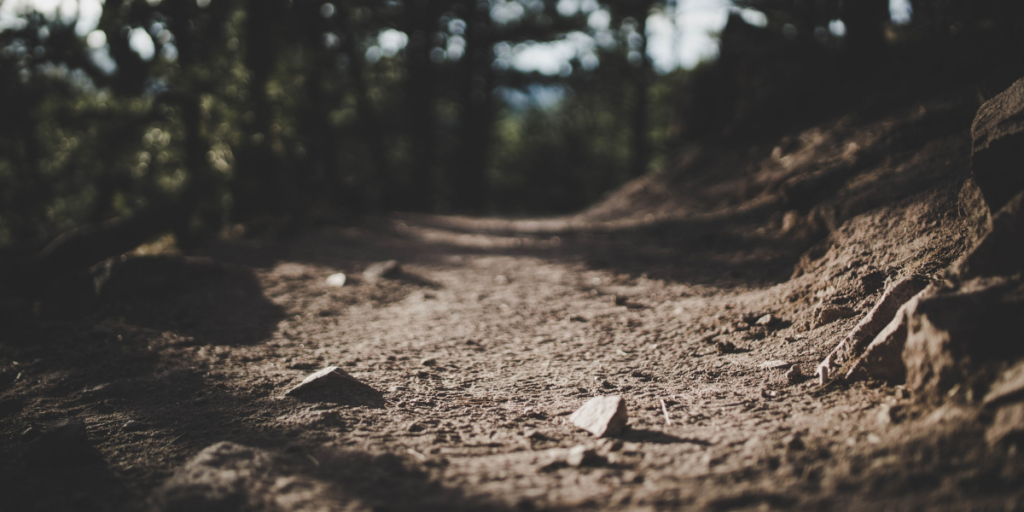
Not literally, of course—that’ll send you off a cliff or headfirst into a tree. However, you’ll need to learn to watch the ground a bit more when running Colorado trails. They don’t call these the Rocky Mountains for nothing.
Try to aim your sights at least 10-20 feet down the trail. This will give you adequate time to prepare your route and watch for any obstacles. While you can find some buttery-smooth singletrack trails in some parts of Colorado, most will have at least the occasional rock (if not more) to spice up your adventure.
The 6 Best Trail Running Trails in Colorado
Colorado is a huge outdoor playground with lots of towns, environments, and mountain ranges to explore. Recognizing and describing every trail running trail in Colorado would be a lifetime pursuit, and I can’t even imagine a full-length book doing it justice.
There are just thousands of trails.
With that in mind, I’ve done my best to try to collect the best trail running trails in the state based on various factors:
- Distance: Longer isn’t always better. It’s nice to have some variety in your running trail repertoire.
- Remoteness: Sometimes, it’s worth driving hours into the wilderness to find a remote trail.
- Busyness: You might want to have the trails all to yourself, or you might like to see a friendly homosapian every once in a while. But let’s agree—nobody likes a crowd on the trails.
- Elevation: Not every trail is made for trail running. Some are better made for hiking and scrambling, while others promise uphill and downhill trail running euphoria.
- Location: You could run through the rocky, high-altitude terrain of the San Juan Mountains or around a gentle lake with expansive views.
- Environment: Want to run through thick pine forests, colorful aspen trees, red rock formations, or along the spine of a heart-pounding ridge?
Did I miss any of your favorites? If so, comment at the bottom of the post and let me know!
1. Perimeter Trail, Ouray
The Perimeter Trail is the pride and joy of Ouray, Colorado, and it’s not hard to see why. This route is roughly 5.5 miles with 1,600 feet of elevation, but the miles melt away like sweat on a hot day. You’ll see plenty of huge, well-known waterfalls (Cascade Falls and Box Canyon Falls) and tons of other lesser-seen falls.
You can hop on and off this trail practically anywhere in town, making it a true build-your-own-adventure experience. Go for a short loop around the Ice Park, or spice things up and do the Portland Loop for up-close-and-personal views of the Amphitheater mountains towering above the tiny town.
The Perimeter Trail has the perfect mixture of ups and downs to make the entire trail “runnable.” You’ll probably want to power-hike some of the steeper sections, but then you’ll be back on the rollercoaster and crushing some fun descents.
As a Ouray local, trust me—you won’t be disappointed.
2. Mount Sanitas, Boulder
Mount Sanitas is a local favorite in Boulder and for good reason. There are plenty of ways up this mountain, but I’d recommend a nice little loop to lengthen your run and experience more trails.
You’ll start from the Centennial Trailhead and make your way northwest through Sunshine Canyon along the trail. Eventually, you’ll cross the road (look both ways) and begin to climb the Lion’s Lair Trail up to Mount Sanitas. Enjoy the views and get that selfie (no judgment) before descending south along the Mount Sanitas Trail back to your car.
This entire route is right around ~5 miles with 1,300-ish feet of elevation gain. Get out early to avoid the crowds, and just avoid this one on the weekends—it’s just too busy.
3. Picture Rock Trail, Lyons
The Picture Rock Trail in Lyons takes you through a variety of environments. You’ll start on some dry trails in the tall grass for the first mile or so, and then you’ll begin to dodge through the rocks and trees as you make your way further up.
Eventually, you’ll begin trail running through pine forests and around tight bends (even more fun on a mountain bike) before coming to a wider, open meadow with a silo in the middle. Around this area, you’ll see lots of other sights of intrigue, including an abandoned car and ruins of ancient homes.
Keep the earbuds in the car for this one. While you might be the only runner on the trail, you’ll likely encounter at least a handful of mountain bikers along your journey. Most are courteous and expect other trail users, but keep yourself aware so you don’t get surprised around a corner.
You can climb Picture Rock Trail into Heil Valley Ranch and connect it with a handful of other trails and loops, but an out-and-back to the loop connection will net you around ~10 miles with 1,000 feet of elevation gain.
4. Turquoise Lake, Leadville
The Turquoise Lake Nature Trail is a 12-mile out-and-back trail with around 500 feet of elevation gain. You’ll semi-circle around the east and north side of the lake before returning the way you came (or hopping on Turquoise Lake Rd / CR 9 to make it a full loop).
While you jaunt around the wooded shoreline, you’ll enjoy epic views of surrounding 14’ers, and not just any 14’ers—these bad boys are the tallest ones in the state (including Mount Elbert and Mount Massive).
Keep that in mind on your run, too. You’re outside of Leadville, one of the tallest mountain towns in Colorado. Know your altitude and pace yourself accordingly.
5. Animas Mountain, Durango
Animas Mountain is a rugged peak on the north side of Durango that promises adventure, technical trails, and stellar views. The trail loop is about 6 miles long with 1,500 feet of elevation gain, but the first start to your climb can feel like a grind. Take water, and pace yourself up the switchbacks.
The trail connects with tons of other offshoots and options to extend your journey and keep the fun going. Watch out for other trail users—this area is popular, especially during the summer.
6. Huron Peak, Buena Vista
Get your lungs in shape because this is one of Colorado’s most-runnable 14-thousand-foot mountains (including perhaps Quandry and Handie’s Peak). The route from Winfield Ghost Town will net you about 11 miles round trip with close to 4,000 feet of elevation gain.
The route is fairly obvious, with good signage along the way, and most of the trail is grade-a trail running (with the wonderful rock or two, of course). Bring plenty of water and snacks on this one, and know your limits. Altitude sickness is the real deal, and it’s more likely to get you if you’re tired, dehydrated, and hungry—I know (again) from experience.
If you have a 4WD vehicle, you can park a bit further up the road and shave off some miles and elevation—but what’s the fun in that?
6 Awe-Inspiring Trail Running Races in Colorado
Colorado is one of the trail-running meccas of the world, and it has more than a handful of some of the most iconic races across the globe. The best ultra-endurance athletes have lined up at these races for decades now, making Colorado one of the most competitive running scenes in history.
You’ve probably heard of some of these races before (like the Leadville 100 and the Hardrock 100), but I also included a handful of lesser-known trail running races in Colorado that offer that special something-something.
Prepare to be inspired.
1. Leadville 100
The Leadville 100 is one of Colorado’s most iconic and history-rich ultramarathon races. The course takes runners up a 50-mile out-and-back trail with 15,600 feet of elevation gain and a high point of 12,620 feet at Hope Pass.
It’s a brutal race that is 1 of 4 of the “Western Slam.”
- Leadville 100
- Western States 100
- Wasatch Front 100
- Angeles Crest 100
This is extreme Colorado Rockies terrain with high altitudes and rocky trails—exactly what you’d expect (and want) from a gnarly 100-mile race.
2. Hardrock 100 Endurance Run
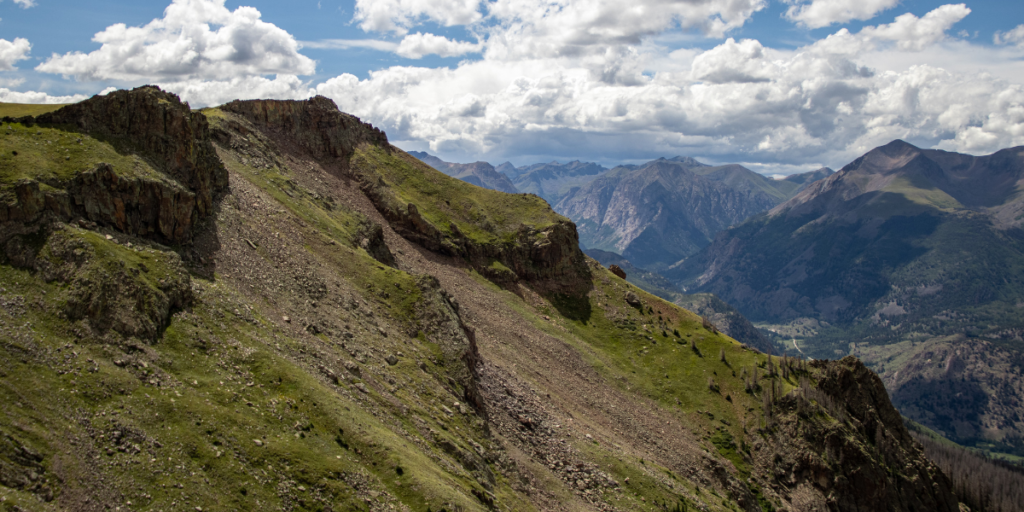
The Hardrock 100 is one of the most intense ultramarathon races in North America. This gnarly course takes runners on a loop (that switches directions each year) through the San Juan Mountains of Colorado, a rugged set of peaks and trails that test even the most conditioned athletes.
Qualifying and gaining entry to this limited-slot race is the challenge of a lifetime, and some athletes spend years (even decades) qualifying without getting a coveted ticket to the race. And if you thought getting in was hard, just wait until you see the course.
The Hardrock 100 route connects the towns of Silverton, Lake City, Ouray, Telluride, and Ophir, taking runners over mountains and passes. Runners will gain over 33,000 feet during the course of the race and spend the average elevation at 11,186 feet (near tree line).
3. Ouray Backyard Ultra
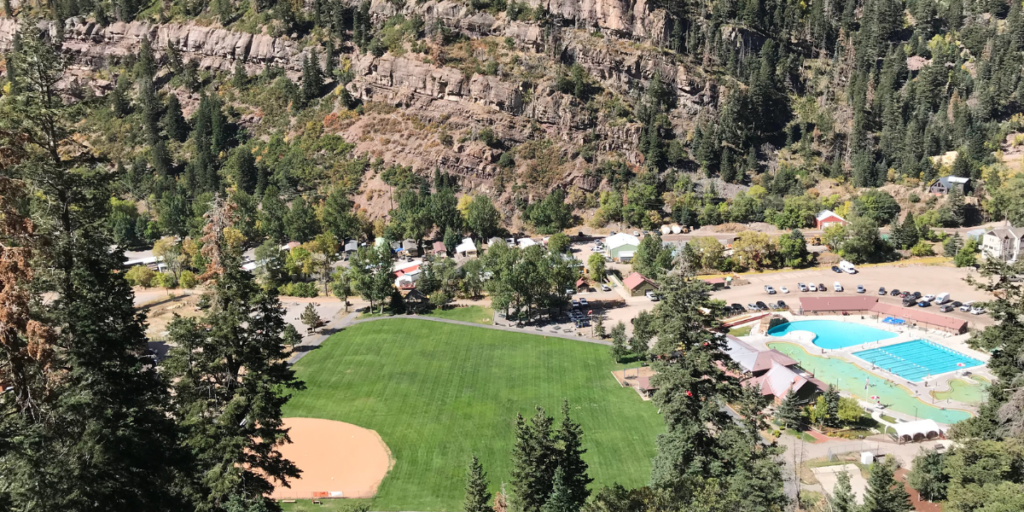
We’ll take a break from 100-mile races and take you to another San Juan Mountain favorite—the Ouray Backyard Ultra. This last-man-standing race has runners complete a 4.167-mile every hour, on the hour, until everyone quits except one person.
Finish the 4.167 miles early, and you can take a break before the next hour arrives—you just have to be toed up in the corral when the bell goes off at the next hour to continue racing.
“The race continues hour after hour until there is only one person left. To secure the win, that person must successfully complete one more hour than anyone else. The race then ends.”
The race has a short history, but it’s already seen runners go well over 100 miles (24 hours) and into the second day. You also have to take into account that the race is at nearly 8,000 feet in Ouray, which adds a layer of difficulty to anyone traveling to compete.
4. Ouray 100
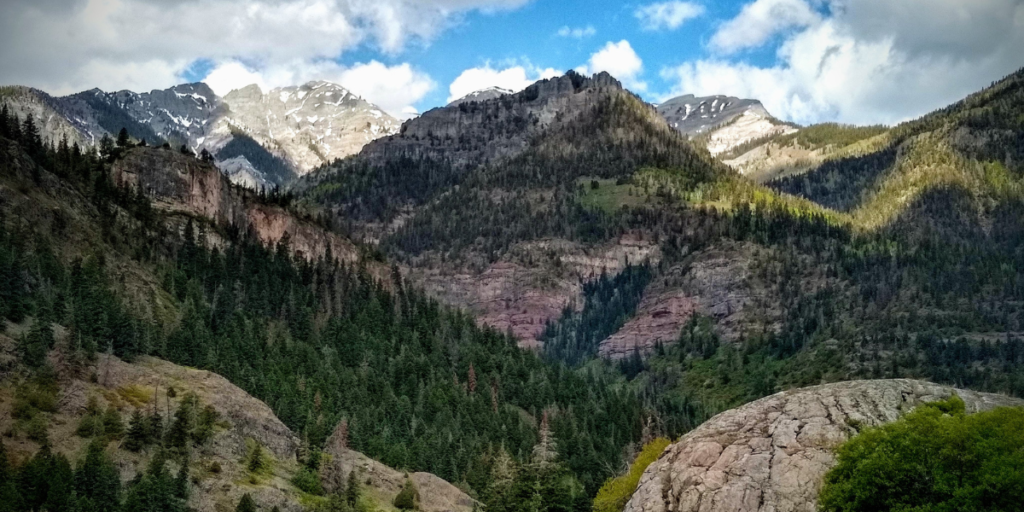
The Ouray 100-Mile Endurance Run just might be the hardest 100-mile race in North America. This insane concoction has over 40,00 feet of elevation gain and features some of the most beautiful scenes in the world.
This route doesn’t bypass mountains—it goes straight over them. You’ll face some gnarly climbs and quad-pounding descents, and nobody has the fortune of finishing in less than a day (yet). The fastest-known time on the trail is 30:00—compare that to Leadville 100’s 15:00-some hours, and you can see the stark difference in difficulty.
5. TransRockies Run
The TransRockies Run is a 6-day, 120-mile adventure that has runners traveling through different staged routes from Buena Vista to Beaver Creek, Colorado. This magical experience gives you just enough rest in between stages to fuel up and get some sleep before trashing your legs again.
Is it harder to run 100 miles straight or 120 miles split up over 6 days? Sign up and decide for yourself. You can complete the race as a team or as a solo runner.
6. Pikes Peak Marathon
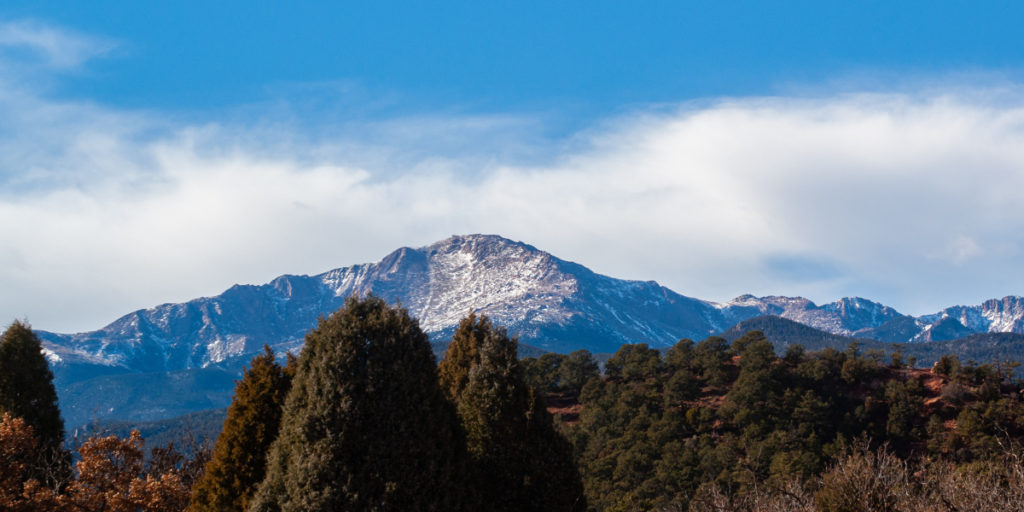
The Pikes Peak Marathon is the oldest (continually held) marathon in the United States. It takes runners from Manitou Springs, Colorado, up to the grand summit of Pikes Peak, at a whopping 14,115 feet—and then back down, of course. The climb has 7,800 feet of elevation gain.
Some of the best ultrarunning professionals in history have lined up at this race, and it’s a great opportunity to run fast (relatively speaking) on mountainous, alpine terrain.
Just don’t underestimate the downhill. Your race is not finished when you reach the top. You’re just getting started.
Start Your Trail Running Journey in Colorado
Inspired yet? You now have a taste of the best trail running trails and races in Colorado—and you’re armed with the basic know-how you need to hit the trails and kick up some dirt.
Want to discover some of Colorado’s best-kept trail secrets? Subscribe to the Unknown Colorado newsletter and get exclusive recommendations sent straight to your inbox.

